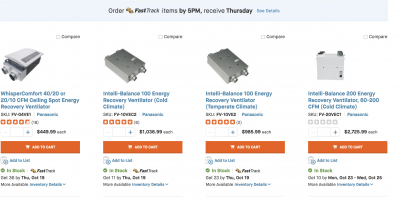One exception to the comments above, which may or may not apply to the OP:
CalGreen and other regulations (ASHRAE 62.2, LEED, CA T-24) for new dwellings can require “whole house indoor air quality (IAQ)” ventilation. This is because newer structures are so well insulated and sealed that the air inside can become stale. In response, some mechanical designers will specify multi-speed bath fans, where the fan runs continuously at a very low speed to draw air through the house, then increases speed when it is switched on high by a user, or when a humidistat detects increased humidity in the bathroom.
In this instance, the fan requires its own separate disconnect, so that it won’t be shut off (code violation) when the breaker is tripped on other outlets or lights. Some engineers will simply give it its own dedicated breaker. Others will provide a secondary shutoff switch within the bathroom, with a clumsy sign that says something like: “fan disconnect: to be used only for maintenance and in event of poor exterior air quality”.

